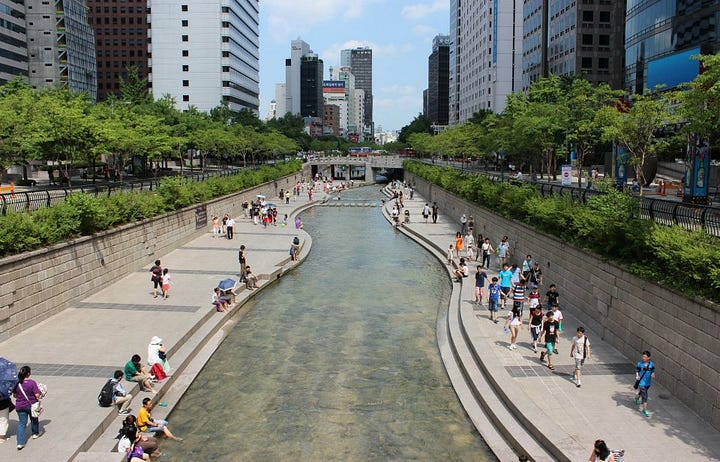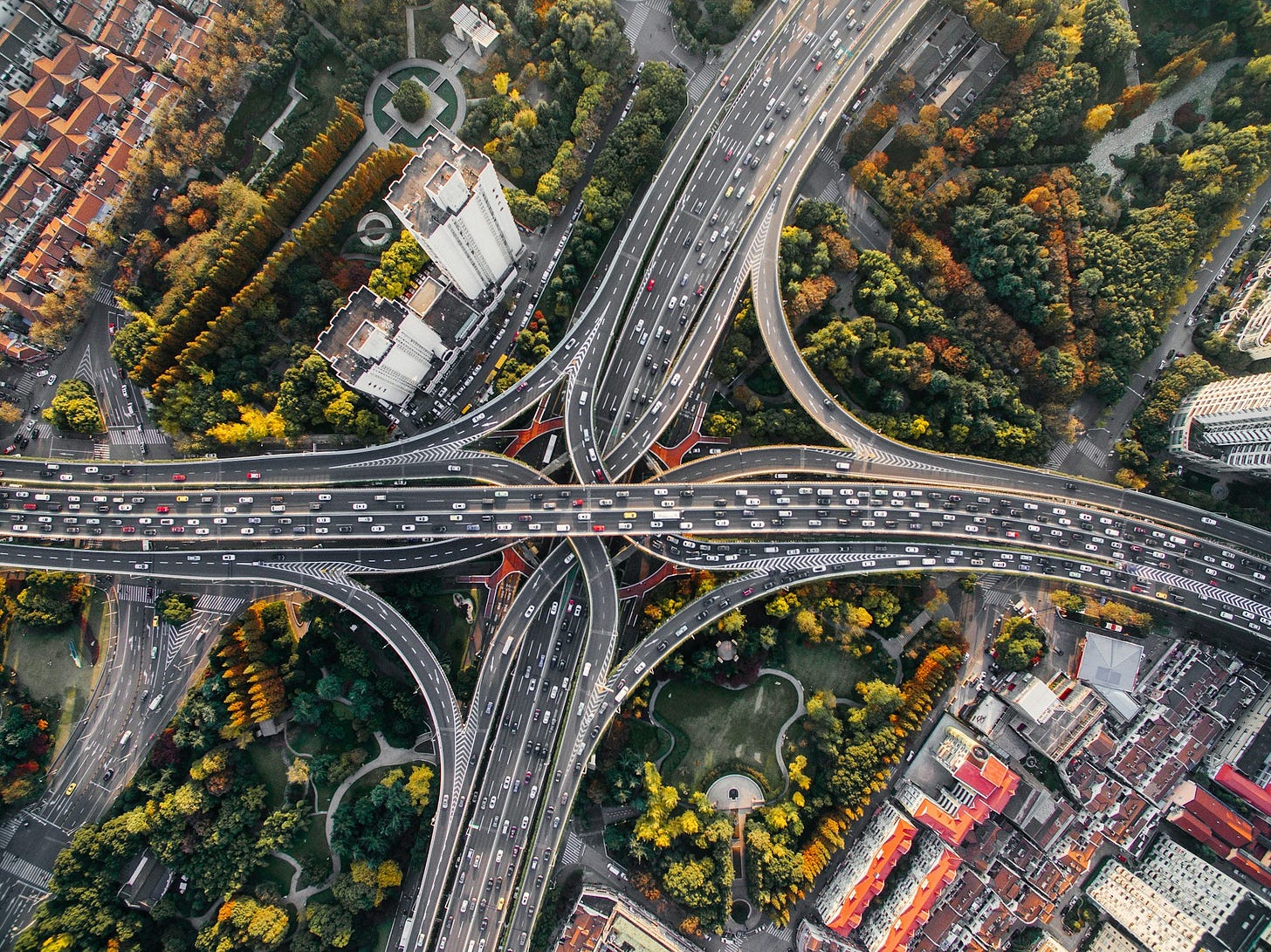There’s a simple fact that may change the way you look at urban infrastructure:
Reinforced concrete has a lifespan of 50-100 years.
Why is this important? Because the huge urbanisation and expansion of transport infrastructure of the last century was possible because of reinforced concrete. Many bridges, highways and tall buildings around the world are coming to the end of their lifespan in the coming decades. How we respond to this fact can be either a disaster or a blessing.
If you’re not aware, reinforced concrete is a composite of steel rebar and cement concrete. It’s an incredibly versatile and strong material, which is partly why it has become the go-to material for construction around the world. Where once we used timber and stone, we now use reinforced concrete. The great sad joke is that many timber and stone structures have lasted centuries while our modern infrastructure is starting to crumble after just decades.
The post-war period saw a huge increase in the material’s use in highways, flyovers, skyscrapers, dams and other major infrastructure. By 2050-2070, a lot of these structures will no longer be safe for use. What is our response? Do we invest trillions of dollars/pounds/euros in strengthening or rebuilding these infrastructures to maintain the status quo? Or do we take this opportunity to rethink the infrastructure of cities?
Let’s take major road infrastructure as an example. For much of the 20th Century, the car was king and urban motorways blasted apart historic neighbourhoods in cities from Birmingham to Brooklyn. These roads were meant to better connect us together. But they also created barriers to walking and cycling, contributed to air pollution and forever changed the character of local neighbourhoods. If these structures are nearing their age limit, this is an amazing opportunity to replace them with a more sustainable, humane and beautiful urbanism.
We can take examples from the cities that have been courageous enough to do this work already. The daylighting of the Cheonggyecheon river in Seoul is a famous example of a city reversing the mistakes of the 20th century and replacing concrete with ecology.


Where a movement function is still needed, urban highways can be downgraded and turned into boulevards, which provide space for walking, cycling and street trees. The Congress for New Urbanism published a report, Freeways Without Futures, which demonstrates how 15 of the most damaging urban freeways in the USA can be reimagined in this way.
The amount of space taken up by vehicle infrastructure is staggering. Below is a graphic from the UK Government’s Living with Beauty report that shows how a single highway interchange in the USA takes up the same space as the city centre of Siena, Italy. The point is: If we take this opportunity to dismantle failing 20th Century infrastructure, we can free up huge amounts of space for healthy, liveable communities and the restoration of nature.

This is just the tip of the iceberg. Bridges, railway infrastructure, flood walls and dams will all need creative reimaginings as this century progresses. Let’s start planning for the transformation of aging infrastructure now before it’s too late.
What do you think? Let me know in the comments.
Further reading / listening:
The problem with reinforced concrete (University of New South Wales)
Urban highway removal: 4 ways to reknit a city’s fabric (Stantec)
A new vision for urban highway infrastructure (ARUP)
Green Urbanist Podcast #82: Decarbonising Concrete and Steel, with Jeff Rissman
Thanks for reading,
Ross




